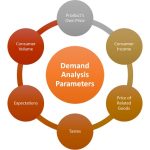Taxes and Efficiency
The aim of tax system is to raise revenue for the administration. However there are many ways to elevate any specified amount of money. In designing a tax system strategy makers have two intentions: Efficiency and Equity.
One tax system is more effective than the other if it raises the same amount of revenue at a smaller cost to tax payers. Then the costs of taxes to the tax payers are nothing but the payment of tax itself.
This shift of money from the tax payer to the administration is an expected aspect of any tax system. Yet taxes also impose two other costs which well designed tax strategy tries to shun or to the least reduce:
- The dead-weight losses that result when taxes deform the pronouncement that people make;
- The governmental encumbers that tax payers bear as they comply with the tax laws.
An efficient tax system is one that levies small deadweight losses and small governmental encumbrances.
Deadweight Losses
If the admin imposes tax on ice cream, consumers consume less ice cream but more of cold yogurt. If the admin taxes housing, people live in smaller houses and expend more of their earnings on other things.
If the admin imposes taxes labour incomes, folks job less and take pleasure more of leisure. Since imposition of taxes distorts incentives they involve deadweight losses.
The deadweight loss of a tax is the reduction in economic affluence of tax payers in surplus of the amount of revenue raised by the administration. The dead weight loss is the ineffectiveness that a tax creates as people distribute resources as per the tax inducement rather than the true costs and benefits of the commodities and services that they trade.
Let us regard an instance that A places a $5 value on a snack and B places a $4 value on it. If there is no tax on snack, the cost of snack will reflect the cost of making it.
Let us assume that the price of snack is $3, so both A and B opts to purchase one. Both consumers get some surplus of value over the amount paid. A gets consumer surplus of $2 and B get $1. Aggregate surplus is $3.
Now let us assume that the administration imposes a $1 tax on snack and the price of snack rises to $4. A still purchases a snack however the consumer surplus is now $1. B now decides not to purchase the snack as its price is higher than its value as per notion.
The administration collects tax revenue of $1 on A’s snack. Aggregate consumer surplus has dropped by $2 (from $3 to $1). Since aggregate surplus has dropped by more than the tax revenue the tax has a deadweight loss.
Governmental Encumbrance
The governmental encumbrance of any tax system is part of the inefficiency it generates. This encumbrance comprises not only the time spent in early months filling out forms however also the time spent throughout the year holding records for tax purposes and the resources the administration has to use to implement the tax laws.
Many tax payers particularly those in higher tax brackets – hire tax lawyers and accountants to assist them with their taxes. These specialists in the compound tax laws complete the tax forms for their clients and assist clients arrange their affairs in a way that minimises the amount of taxes outstanding. This performance is lawful tax avoidance which is diverse from illegal tax avoidance.
CASE STUDY on Whether Earnings or Consumption be Imposed with Tax
When taxes persuade people to transform their manners such as persuading B to purchase no snack as in the example mentioned above, the taxes cause deadweight losses and make the distribution of resources less efficient.
Much of the government income is generated from the individual income tax. Tax demotivates people from working solid as they otherwise may. Another ineffectiveness created by this tax is that it demotivates people from thrift.
Let us assume an individual who is between his 20’s considers thrift of $50. if he keeps this amount in savings deposit that gross 4% and leaves it there he would have $543 when he retires at the age of 60 years.
Even then if administration taxes 1/8 of his interest income each year the effective interest rate is only 3.5%. After 40 years of earning 3.5% the $50 increases to only $262 less than half of what it would have been without taxation. Therefore, since interest income is taxed, saving is much less attractive.
Few economists advocate avoiding the current tax system’s disincentive toward saving by changing the basis of taxation. Somewhat then taxing the amount of income that public earn the admin could tax the amount that people expend.
Under this condition, all earnings that are saved would not be taxed until the saving is later expended. This surrogate system known as the consumption tax would not distort folks saving plans.
Diverse provisions of the current tax code already make the tax system a bit like a consumption tax. Tax payers can put a limited amount of their savings into special accounts – like Individual Retirement Accounts and other plans that break away from taxation unless the money is withdrawn at the time of retirement.
For people who do most of their savings through these retirement accounts their tax bill is in effect based on their consumption quite than their earnings. European nations are inclined to depend more on consumption taxes than does the US. Most of them raise a significant amount of government revenue through a value added tax, or a VAT.
A value added tax is like the retail trade tax that much US state use, however than collecting all of the tax at the retail level when the consumer purchaser purchases the ultimate commodity, the admin collects the tax in phases as the commodity is being manufactured, that is as value is added by concerns in the sequence of manufacture.
State and Local Administration
State and local administration gathers about 45% of taxes paid. Let us observe closely at how they get tax revenue and how they expend the same.
Receipts
The below table representation represents the receipts of a developed nation’s state and local administrations. Aggregate receipts for a particular year were $X billions or $Y per person. This tablet represents how this aggregate is broken down into diverse kinds of taxes.
The two most vital taxes for the State and Local administrations are sales tax and property tax. Sales tax is imposed as a proportion of the aggregate amount expended at retails shops.
Each time a consumer purchases something, he pays the shop keeper an additional amount that the shop keeper dispatches to the administration. Few states eliminate definite items that are considered essential such as food and clothing.
Property taxes are levied as a percentage of the approximated value of land and structures and are remitted by property owners. Mutually, these two taxes make up more than a third of all receipts of state and local administrations.
State and local income administrations also impose individual and corporate income taxes. In most of the cases, state and local income taxes are likewise to federal income taxes.
In other cases, they are somewhat different. For instance, some states tax income from remuneration less heavily than income earned in the form of interest and dividends. Few states do not tax income at all.
State and local administrations also take delivery of considerable funds from the federal administration. To some length the federal administration’s strategy of sharing with state administration reallocates funds from high earning states that pay more tax to low earning states who receive more benefits.
Frequently, these funds are tied to definite programs that the federal administration requires to support. Ultimately, state and local administrations get more of their receipts from diverse sources included in the other grouping in the tablet below. This may integrate tolls from roads and bridges, fees for fishing and human licenses and fares for public buses and subways.
| Receipts of State and Local Administrations | |||
| Tax | Value in Billions $ | Contribution per individual | Percentage of Receipts |
| Sales Tax | X | Y | % |
| Property Tax | X | Y | % |
| Corporate Income Tax | X | Y | % |
| Individual Income Tax | X | Y | % |
| From Federal Administration | X | Y | % |
| Others | X | Y | % |
| Aggregate | $X | $Y | 100% |
Expending
The below tablet represents aggregate expending of state and local administrations in a particular year and its break ups amongst the major groupings. The principal individual outlay for state and local administrations is edification. Local admin pay for the public institutions, which teaches most students from nursery through high school.
State admin put in to the assistance of public universities. In a particular year edification accounted for one third of expending of state and local admin. The next major grouping of expending is for public affluence which integrates shift of payments to the deprived.
| Expending of State and Local Administrations | |||
| Grouping | Value in Billions $ | Contribution per individual | Percentage of Expending |
| Edification | X | Y | % |
| Public Affluence | X | Y | % |
| Roadways | X | Y | % |
| Other | X | Y | % |
| Aggregate | $X | $Y | 100% |


